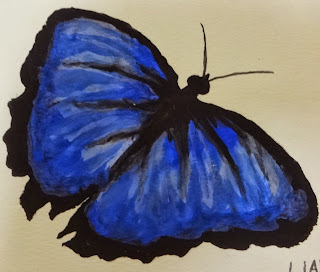In the past, artists used paints that were made from natural ingredients. Each artist had to learn how to source, grind and mix his or her own ingredients to make paint. With the dawn of the petrochemical industry in the 1930's (Smith, 2003), the knowledge and skill of creating natural paints was displaced by cheaper, petroleum-based, ready-to-use paints and that is still largely the case today.
Petrochemicals have become so pervasive in our lives, that most of the time we don’t even know what has been made with a fossil fuel derivative or by-product and what hasn’t. We are highly dependent on petrochemicals, but their use is not without cost to the environment, our health or the future of our planet.
Historically, natural paints like watercolors and oils used to be made out of earth and mineral pigments or plant and animal substances mixed with oils, gums, resins, waxes and other natural additives. Often the mineral pigments used in the past were highly toxic, primarily from lead which exposed the artists to high levels of toxicity. Today, natural paints are made from ingredients that are from the plant, mineral or animal world. They all require some degree of processing or chemistry to remove toxic elements, or to prepare the substance into a usable form. The difference between pigments used in natural paint and those in conventional paint is like the difference between plastic and glass. Plastic is made from fossil fuel and glass is derived from sand, a naturally occurring mineral mixture. Similarly, the rest of the ingredients that are added to natural paint are from plant or animal sources, not petroleum.
There are some drawbacks to natural paints. Conventional paints use pigments that come from burning fossil fuels at extremely high temperatures and are engineered to provide hundreds of artificial colors. Not all mineral pigments, such as the bright red cinnabar (vermillion), can be collected at a reasonable cost, or ‘cleaned up’ to remove toxicity (Smith, 2003). Clay earth pigments and other mineral-based pigments that are available for us to use in paint are beautiful but limited in color range. Although it is true that conventional paints can be very economical, natural paints are sometimes only slightly more expensive and in return you still are provided with high-performing quality and rich color. Some natural art paint brands are already prepared for you, and some are in powdered form for you to prepare yourself with ingredients you may already have in your kitchen. Explore what’s available and consider switching back to natural paints like the old masters!
Smith, Ray. The New Artist's Handbook, UK Publishing, Inc.; New York: 2003 print













































